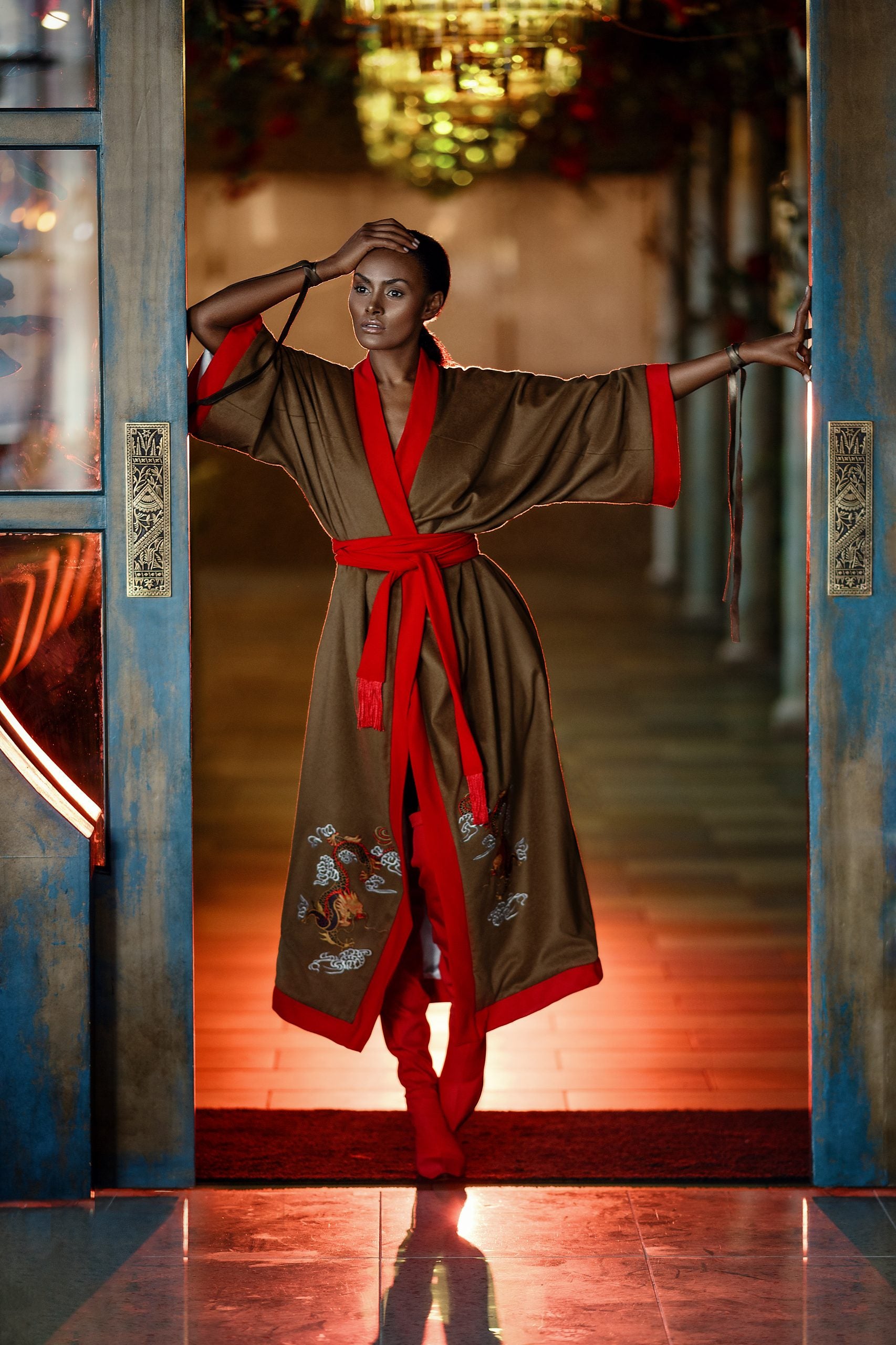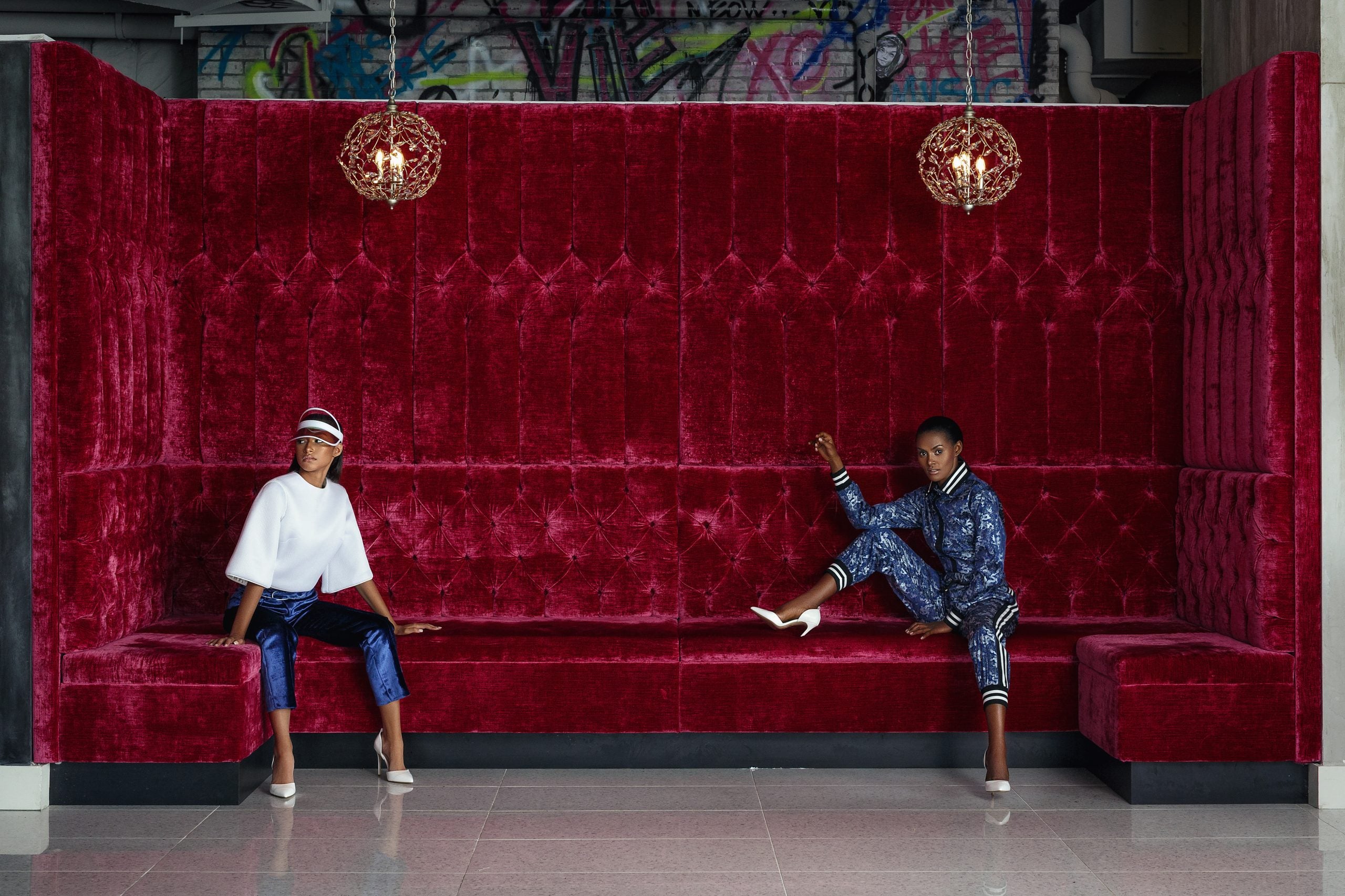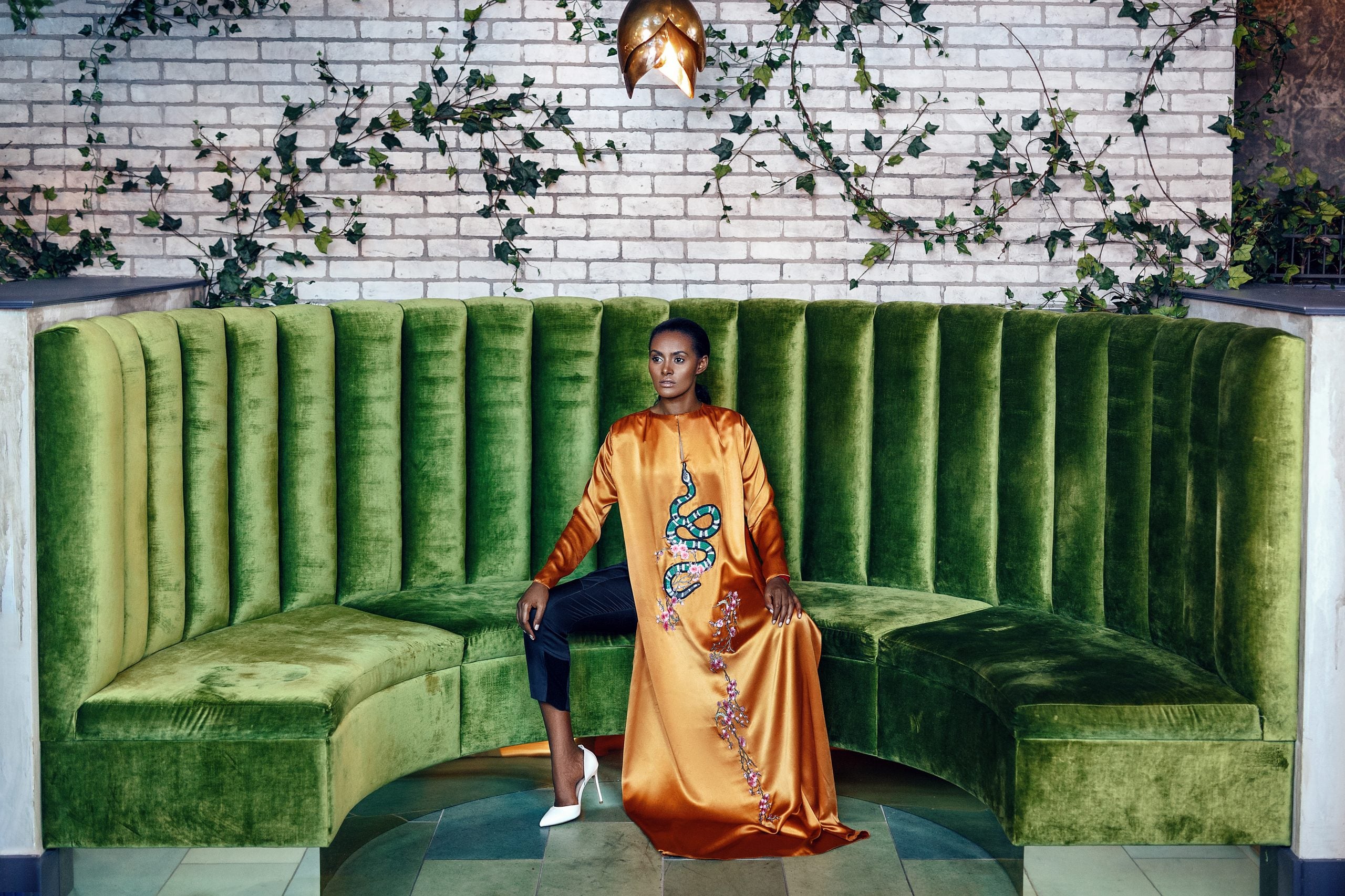
Deidre Jefferies knows fashion inside and out. She tells ESSENCE that her interest in fashion began with her mother’s personal style, but a trip to a fashion trade show in Vegas opened her eyes to the vast potential for wealth-building in the fashion industry — a concept that piqued her interest immediately. “I could never stop thinking about it,” Jefferies says. “I could never stop wanting to do it.”

Jefferies’ initial brand launch is different from the understated luxury pieces we’ve come to know from her line today. She launched her first brand with a close friend, debuting the label at Mercedes-Benz Fashion Week in New York, and shortly after, was named Designer of the Year by The Washington Post and The Fashion Delegate. She went on to partner with luxury car brand, Rolls Royce, and attracted sponsors such as Coca-Cola and Smart Water.
However, after Jefferies and her then partner were unable to fulfill a large order from a buyer in New York, Jefferies had to go back to the drawing board. With the fast success of her label also came the realization that she needed to broaden her education about the business of fashion while also finding tangible financial resources. “We needed so much to get ready. And for me, getting ready was getting my education,” Jefferies says. When Jefferies relaunched with ESPION Atelier, the sleek pieces were heavily influenced by the polished and professional style of dress in Washington, DC, the luxury designer’s hometown, given the city’s close proximity to government entities. Though vinyl, gloves, shiny fabrics and bodycon silhouettes appear as key reference points in her designs, the brand maintains a classic and timeless appeal.
Despite the push for more representation in the fashion community, Black designers like Deidre continue to face significant barriers to success. From securing investors to establishing retail support, forging pathways for long-term growth is critical. Recognizing these unique challenges and the opportunity to provide a platform for creative advancement, ESSENCE teamed up with Chase and American lifestyle brand, Lands’ End, to launch Banking on Style. This exciting program gave Jefferies and two fellow emerging fashion designers a platform to elevate their brands through a powerful collaboration and design contest.
ESSENCE got a chance to chat with Jefferies about her start in the fashion industry, the importance of educating new talent, and securing your finances as a designer.

ESSENCE: When did you realize you loved fashion?
Jefferies: I had a really fabulous mom that looked like Diana Ross every day. I don’t know why, but she was super fancy. I developed her taste and general love of clothing, but I didn’t necessarily want to be a fashion designer. I just was one of those people who knew how to put it together.
ESSENCE: How did you get started in designing?
Jefferies: My best friend and I got invited to Las Vegas to work at his booth at the MAGIC Convention. This was when brands like Sean John, Fubu and Rocawear were launching and we got to see how the manufacturing business really worked. At the same time, I realized I was good at sketching. So, after the convention, I started my first line with my best friend, but there was so much we didn’t know. We started with a big financial advancement from another friend, and we grew way too fast. We got into Henri Bendel before they became just an accessories shop, but in the end, we couldn’t raise the money to produce the clothing to fulfill their orders and we had to put the brand down. Later, I started over on my own with ESPION Atelier. Being knowledgeable in the fashion industry before entering is the most important thing. With my first launch, we had not established enough credit to have any factory take a chance on us—that was a hard lesson.
ESSENCE: What kind of financial requirements should an emerging designer know is associated with producing a luxury collection?
Jefferies: $60,000 a collection, easy. If you live at the luxury price point, you can’t skimp on the fabrics. All the details cost you an extra $40 per pattern, it’s a very expensive undertaking. Patterning can cost you up to a thousand dollars each garment in addition to what you pay for fabric and trim, so. So digital is really going to help us and designers coming after us. Now we’ll have a better way to do things because pattern making digitally will save you from cutting fabric.
ESSENCE: Discussing those hardships, how did you feel to be chosen for the Banking on Style initiative?
Jefferies: I slid off the couch and screamed. Getting that phone call was wonderful. I mean, it’s just amazing that it came from ESSENCE, because I’m crazy about the new ESSENCE. I was really honored to be chosen. And then once I learned more about the Advancing Black Pathways Initiative, I was really humbled.

ESSENCE: What was your aesthetic when designing work wear for Chase Style?
Jefferies: I grew up in DC, where it’s kind of prim and proper because of all the government sectors here. We’re all White House proper when we have to go to work. But then, we’re a Black city, so you get to see the mix of that after work. I tried to give the collection a good sporty mix that was still very polished.
ESSENCE: What motivates you as a designer?
Jefferies: In the beginning, I was looking for a way to do what I love and build wealth for my family. My mindset was business first and then design, with God at the head of it all. As I began to research the “business of fashion,” I discovered that design was such a rich, multi-faceted, sector with unlimited creative opportunities… like magic, you could draw your dream life. As a creative with my own businesses, there are no limits, no parameters set for me to work within. Freedom is the ultimate blessing. Now that my brand is growing and its DNA has crystallized, my motivation is legacy building and using everything I’ve learned to help others.
